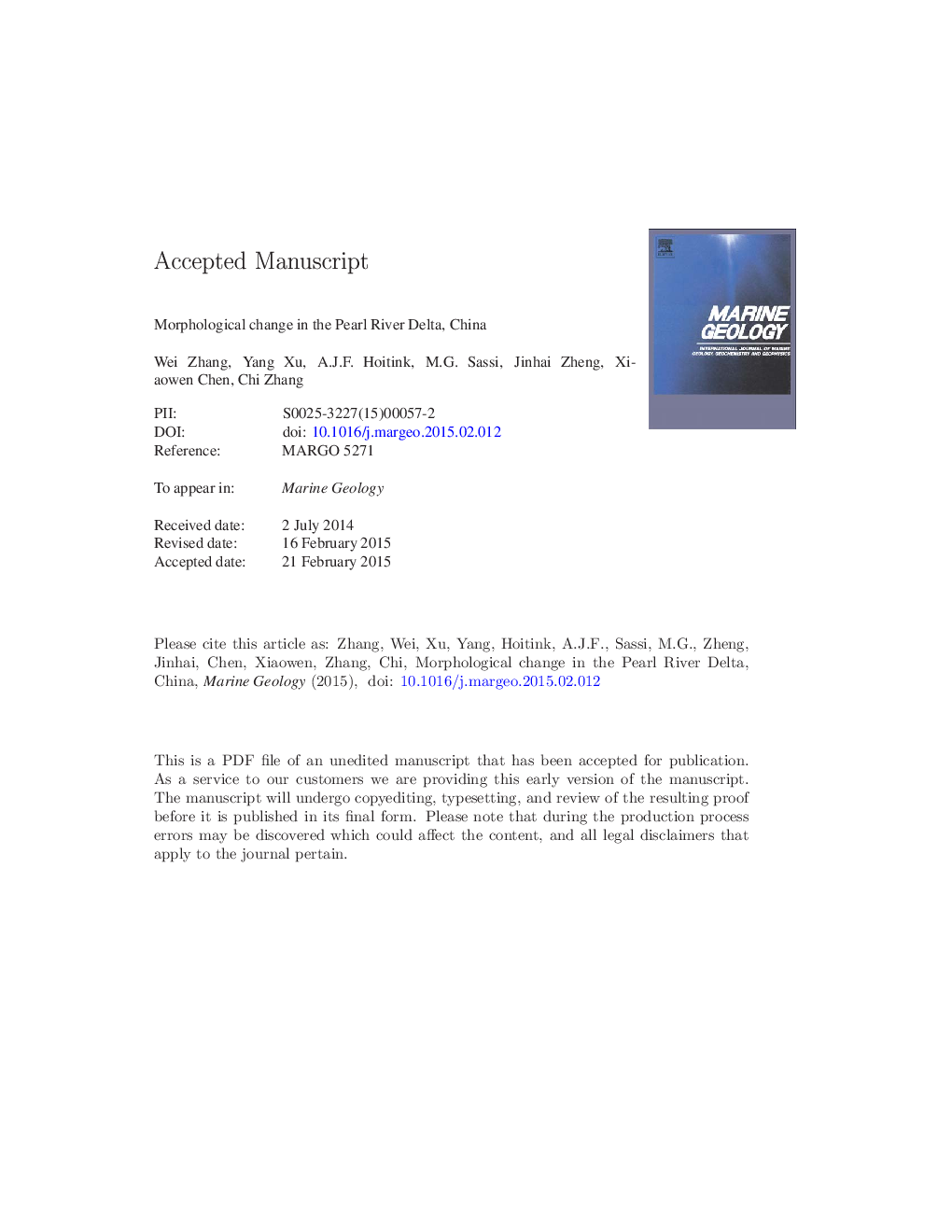| Article ID | Journal | Published Year | Pages | File Type |
|---|---|---|---|---|
| 6441527 | Marine Geology | 2015 | 60 Pages |
Abstract
Morphological changes in the Pearl River Delta (PRD) have been investigated using bathymetric charts, underwater Digital Elevation Models, remote sensing data and Geographic Information Systems. Water depths were extracted from digitized charts to explore the accretion-erosion characteristics of three estuarine environments, and to provide quantitative estimates of changes in sediment volumes. Multi-temporal satellite images have been used, in combination with topographical data, to analyze the coastline changes. PRD has gained an abundant amount of sediment of almost 9.45Â ÃÂ 105Â km3 above the 10-m isobath in the period roughly between 1970 and 2010; the average sedimentation rate was 3.15Â ÃÂ 104Â km3/yr. Between 1976 and 2006, the coastline extended seaward by 579.2Â m on average, with a mean net extension rate of 19.3Â m/yr. The results suggest that the PRD experienced a major phase of accretion, with net erosion only in some local zones. Coastline extension, associated with major morphological changes, has accelerated in recent decades. Changes in boundary conditions, such as sea-level rise, seem to have relatively minor impacts on the dramatic changes in the morphology of the estuaries. The seaward extension of the coastlines shows an increasing trend whereas the sediment supply from the delta displays a decreasing trend. A detailed comparative analysis demonstrates that land reclamation in the PRD is the most significant factor that progressively alters the delta morphology, overwhelming the effects of subsidence and sediment supply.
Related Topics
Physical Sciences and Engineering
Earth and Planetary Sciences
Geochemistry and Petrology
Authors
Wei Zhang, Yang Xu, A.J.F. Hoitink, M.G. Sassi, Jinhai Zheng, Xiaowen Chen, Chi Zhang,
